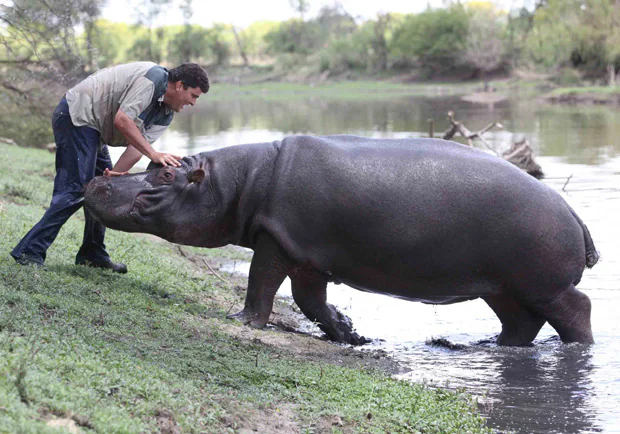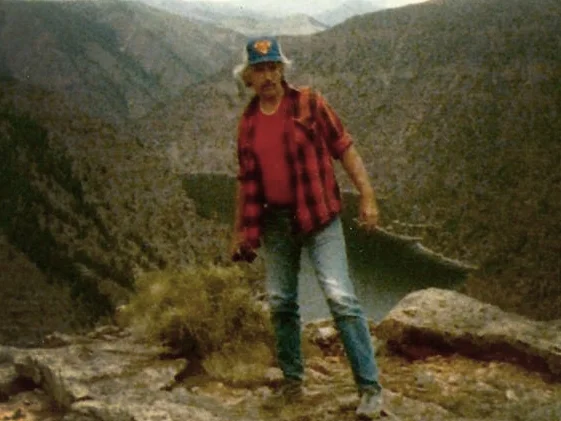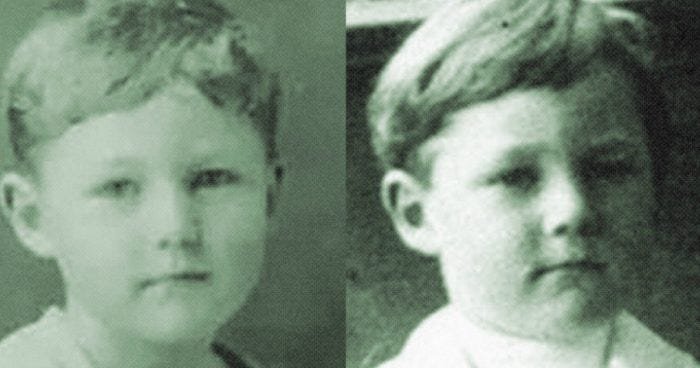Tutankhamun is, without a doubt, the most popular ancient Egyptian pharaoh. He is a household name with worldwide recognition.
This is mostly due to the intact nature of his tomb, which, by happy coincidence, was looted less often than most tombs in the Valley of the Kings.


The fateful expedition by Howard Carter in 1922 revealed, as he put it, many “wonderful things”.
From this moment forward, Egyptomania would be alive and well in the Western imagination, sparking a renewed interest in all the kings of Egypt.
Tutankhamun’s Egypt
Tutankhamun came to the throne during a tumultuous time in Egypt. His father, Akhenaten, was the world’s first known monotheist. He tried to shift the focus of religious worship in Egypt to a single god, Aten.
He disbanded the religious cults devoted to other gods, which were essential parts of Egyptian religious practice. He even moved the capital to his city, Amarna, shucking centuries of tradition.
This was a radical move that was largely despised by the people and political heads of Egypt at the time. The pharaoh had absolute power, but this shift caused a lot of dissent throughout the country.
When Tut came to power, he was 8 years old. Two of Akhenaten’s immediate successors had died, leaving his young son to take over. He inherited an Egypt that was in desperate need of a return to the status quo.
The Restoration
A stela (informational monument) discovered in the Hypostyle Hall in Karnak details how Tutankhamun restored Egypt to its former glory.
This stela details the chaos and ruin of the end of Akhenaten’s reign and how Tutankhamun worked to restore faith in the Egyptian people.
One of Tut’s successors, a general named Horemheb, would later usurp this stela, writing over Tut’s name with his own. While this was a common practice among pharaohs, it does limit what we know about the extent of his restoration efforts.
Regardless, Tutankhamun worked to overturn Akhenaten’s reforms. He returned Egypt to its polytheistic state, restoring cults of the other gods. The most important of these was the cult of Amun-Ra, a central deity in the Egyptian pantheon.
He even moved the capital from Amarna back to Memphis, its traditional home. Due to his young age, it is reasonable to believe that most of these actions were undertaken by his advisors; still, his willingness to help Egypt prosper cannot be diminished.
Death And Speculation
Tutankhamun’s reign was short, as he died when he was only 19 years old. This means he had little more than a decade on the throne, and he was a child for the bulk of those years.
His death, then, came as a surprise. We might have found his intact mummy, but we still don’t know how exactly he died. Egyptologists have long debated this fact.

His mummy tells us that Tut had a clubbed foot and some wounds that would be consistent with an accident, most likely a fall from a speeding chariot.
However, tests as recent as 2010 have revealed the presence of malaria in his tissues, as well as a bone disease that may have been inherited from this father. At the very least, these problems could be the result of years of inbreeding in the royal family.
The Sands Of Time
However he died, Tut’s death was certainly unexpected. While most Egyptian pharaohs had large, grand tombs that took years to cut and decorate, his burial now had to be rushed.
This meant that his tomb was not large. Experts believe that his final resting place was meant to be the tomb of a lesser official, but it had to be co-opted for Tutankhamun instead.
Once he was interred, the tomb was packed full of burial goods and sealed up. Over time, the entrance was blocked by sand and construction debris from other tombs in the area.
This means that it was lost to time until Howard Carter’s expeditions. The concealed entrance of the tomb and the lack of any record of its location saved it from centuries of robbing and looting.
Rediscovery
In 1922, the Western world was coming off the throes of Egyptomania. This trend marked an intense interest in Ancient Egypt, likely sparked by the golden age of discovery that was happening in the Antiquities department.
By the time Howard Carter got to Egypt, many believed that there were no major discoveries left in Egypt. Against all odds, Howard Carter’s team unearthed the steps leading down to the tomb near the end of the excavation season.
After years of unsuccessful work in the desert, this seemed to be Howard Carter’s dream discovery. It came during the last season he would have funding, as his benefactor Lord Carnarvon was becoming weary of unsuccessful ventures.
Excavating the steps was slow work, but the team worked quickly. Soon, a staircase formed, leading right up to a sealed tomb door. A tomb with seals intact was, at this time in history, nearly completely unheard of.
Just a few weeks after the initial discovery of the tomb steps, Howard Carter took a chisel and a candle for his first look at the inside of Tut’s tomb.
King Tut’s Tomb
Inside, he saw “wonderful things”. Mute statues of gold, funerary goods in complete sets, a commemorative throne… all of these and more awaited Carter when he got his first good look inside.
Moreover, the tomb appeared to be packed to the brim with these grave goods. There were artifacts beyond measure preserved here, with little to no disruption from the intervening centuries. The tomb was, in essence, a time capsule.
The painted walls, once revealed, would show the haste of this burial. The paint had no time to dry between application and the sealing of the tomb, leading to the growth of mould and other bacteria. While most of these microbes were long gone, they have left scars on the paint.
Some of it had peeled away, revealing a hasty cover-up of the original wall paintings.
Though all signs pointed to this tomb being employed quickly, this was of little interest to Carter at the time. He had a daunting task ahead of him: he had to organize, categorize, describe, and document each artifact taken from the tomb.

It proved a monumental task that would take more than a decade. Each statue, trunk, throne, and ornate figure was removed carefully.
With a lot of oversight from Lord Carnarvon and the Egyptian government, the contents of the tomb were eventually sorted enough that a pathway could be made to the burial chamber.
The Burial Chamber
Finding an intact mummy wasn’t so rare as it is now, but the prospect of unearthing a complete burial was tantalizing. With a tomb as untouched as Tut’s, it was clear that the burial chamber would probably be complete.
In February of 1923, just four months after the discovery of the tomb, Carter opened the door to the burial chamber.
Inside was a wooden shrine, gilded with gold. It took nearly the entire burial chamber, with almost no room to move around it.
This would present a challenge when it came time to disassemble and categorize the shrine, particularly when Carter needed to see if there was an intact mummy inside.
Inside the shrine was another shrine covered with an embroidered linen pall. The linen was fragile and needed to be handled carefully to preserve it.
The second shrine was smaller and much easier to access, but inside were two more nested shrines that would need to be dismantled before reaching the sarcophagus inside.
The Golden Mask
Inside the four shines was a red sarcophagus, a beautifully carved resting place made to preserve and protect the king after death. Inside were three inlaid coffins, each gilded with gold and bearing the face of Tutankhamun.
These two outer coffins were made with wood but gilded so beautifully that they looked to be gold. Removing them was an arduous task, and Carter was unsure of what would rest inside.
When he removed the lid of the second coffin, he revealed a breathtaking site; the third and final coffin was made of solid gold.
But there was more to this wonderous discovery than the outer coffin. Inside lay an intact royal mummy, complete with the now-famous golden burial mask.
This mask has quickly become an instantly recognized symbol of ancient Egypt, personifying all its mystery and grandeur into a single golden gaze.
The process of removing the shrines, cataloguing and preserving artifacts, and clearing out the rooms of the tomb meant that the mummy wasn’t removed until 1929.
Each step of the process was reported and sent to worldwide news outlets, with images of each artifact becoming the objects of curiosity for many.
For that decade, the world was gripped with anticipation. Tut, whose job had once been to restore Egypt to its former glory, had fully reignited interest across the world as well.
Conclusion
During his short reign, Tutankhamun sought to undo all the heresies of his father, reverting Egypt to a more traditional state. Though the Eighteenth Dynasty bloodline died with him, he restored what might have otherwise been lost.
It seems that trend continued with the discovery of his tomb in 1922. Tutankhamun sparked a renewed worldwide interest in ancient Egyptian culture and artifacts that had waned in the absence of any major discoveries.
The near-intact condition of the tomb and its untouched secrets continue to fuel the imagination surrounding this ancient culture.
Despite what some may say, Egypt still has plenty to offer the world and the archaeological record.
Sources
https://www.nationalgeographic.com/history/article/king-tutankhamun?loggedin=true&rnd=1720847275807
https://www.britannica.com/biography/Tutankhamun
https://www.pbs.org/articles/king-tutankhamun-life-death-family
https://www.bbc.co.uk/history/historic_figures/tutankhamun.shtml













Leave a comment